What is Artificial Intelligence?
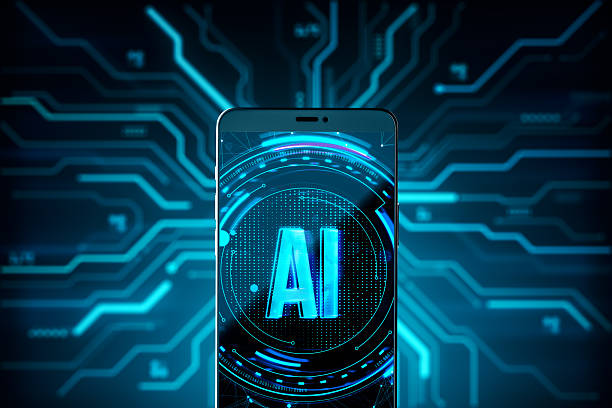
In today’s fast-paced world, the concept of #Artificial_Intelligence (AI) has gained increasing attention.
Artificial intelligence is a branch of computer science dedicated to developing machines capable of performing tasks that typically require human intelligence.
These tasks include learning, problem-solving, language understanding, and pattern recognition.
The primary goal of AI development is to create systems that can think, reason, and act like humans.
This field is very broad and comprehensive, encompassing various aspects of technology and cognitive science.
As a transformative technology, AI holds immense potential to change how we live, work, and interact with the world.
From intelligent voice assistants in our phones to complex disease diagnosis systems in medicine, AI’s presence in our daily lives is growing.
This section provides a general educational and explanatory overview of what AI is and its importance in the current era.
AI’s ability to process and analyze vast amounts of data makes it a powerful tool for solving complex problems.
Artificial intelligence technology is currently permeating all layers of society and industry, promising a future where machines can play more complex roles.
Here, we will get acquainted with the fundamental concepts of artificial intelligence and gain a deeper understanding of this technological phenomenon.
The expansion of AI in today’s world necessitates its understanding for everyone to keep pace with this massive wave of change.
Does your current website build the trust that potential customers should have in your business? If the answer is no, it’s time to get your professional and impactful corporate website with Rasaweb.
✅ Fully custom design tailored to your brand identity
✅ Increased lead generation and business credibility in the eyes of customers⚡ Contact us for a free consultation!
History and Evolution of Artificial Intelligence

The evolution of #Artificial_Intelligence (AI), from its initial ideas to today’s complexities, is a fascinating story of innovation and progress.
The roots of AI date back to the 1940s and 1950s when scientists like Alan Turing and John McCarthy introduced the foundational concepts of computation and machine intelligence.
Turing proposed the “Turing Test,” a significant criterion for measuring machine intelligence.
In 1956, the Dartmouth Conference, organized by John McCarthy, is recognized as the official birthplace of the field of artificial intelligence.
This period saw much optimism, but progress slowed with the advent of “AI winters,” periods of reduced funding and interest in the field.
However, advancements in computational power and access to vast amounts of data led to an AI renaissance in the early 21st century.
The emergence of deep learning and complex neural networks significantly enhanced the capabilities of these systems.
Today, AI is no longer a science fiction concept but a daily reality that is rapidly advancing.
This informative and explanatory history shows how AI has transformed from a theoretical idea into a practical and powerful tool.
The evolution of AI from past to present reflects continuous efforts to simulate and enhance human cognitive abilities.
Today’s AI, with capabilities such as natural language processing, machine vision, and reinforcement learning, is pushing the boundaries of innovation.
These advancements pave the way for the emergence of new generations of intelligent systems that have the potential for fundamental changes in all aspects of human life.
The evolution of AI has led not only to technological advancements but also to intellectual and philosophical transformations.
Types and Categories of Artificial Intelligence
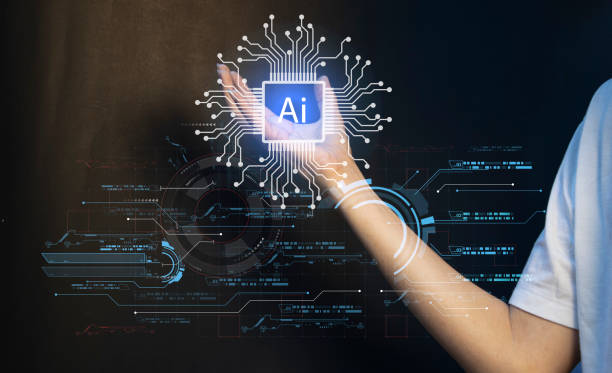
Artificial Intelligence (AI), based on its capabilities and capacities, is divided into various categories, the understanding of which is crucial for anyone interested in this field.
These classifications help us better understand the potential and limitations of AI systems.
The three widely accepted main categories of #Artificial_Intelligence are: Artificial Narrow Intelligence (ANI), Artificial General Intelligence (AGI), and Artificial Superintelligence (ASI).
ANI, also known as weak AI, is the most common type of AI currently in use.
These systems are designed to perform specific and limited tasks, such as facial recognition, voice assistants, or product recommendations.
They cannot operate intelligently in fields other than what they were programmed for.
Most current AI applications we interact with fall into this category.
In contrast, AGI, or strong AI, is a hypothetical system capable of understanding, learning, and performing any intellectual task a human can.
This type of AI possesses broad cognitive capabilities and can reason even in unfamiliar situations.
Currently, AGI remains hypothetical and has not yet been fully developed.
Finally, ASI, or Artificial Superintelligence, is a stage where AI not only reaches human intelligence but surpasses it.
This level of AI is capable of self-improvement and self-creation, and can solve complex problems unimaginable even for the brightest human minds.
This section is specialized and educational, presenting the fundamental differences of AI at various levels for better understanding.
Understanding these categories is very important for the future of AI and its development path.
This comparison shows where we currently stand and what potentials the future of AI holds.
| Type of AI | Description | Current/Hypothetical Examples |
|---|---|---|
| ANI (Artificial Narrow Intelligence) | Capable of performing a specific and limited task. Lacks general awareness and understanding. |
Facial recognition systems, voice assistants (Siri, Alexa), recommendation systems. |
| AGI (Artificial General Intelligence) | Possesses human-level intelligence and can perform any intellectual task a human can. | Robotic systems with general thinking, learning, and problem-solving abilities (still hypothetical). |
| ASI (Artificial Superintelligence) | Intelligence that significantly surpasses the intelligence of the best and smartest human minds. | Systems with self-improvement capabilities and ability to solve super-complex problems (still hypothetical). |
How Artificial Intelligence Works: Principles and Key Concepts

To gain a deeper understanding of #Artificial_Intelligence (AI) capabilities, it is essential to become familiar with its key operating principles and concepts.
At its core, AI is based on Machine Learning.
Machine Learning is a subfield of AI that enables systems to learn from data without being explicitly programmed.
This process involves using algorithms that identify patterns in large datasets and make predictions or decisions based on them.
Artificial Neural Networks, inspired by the structure of the human brain, are another fundamental concept in AI.
These networks consist of multiple layers of “neurons” that communicate with each other and process information.
Deep Learning, an advanced subfield of machine learning, uses neural networks with many layers (deep neural networks) to analyze complex data such as images, sounds, and texts.
This approach allows AI to automatically extract complex features from data.
Indeed, modern artificial intelligence relies on its ability to extract meaning from vast amounts of data.
This specialized and explanatory section reveals the mechanisms of AI in data processing and learning.
AI systems constantly learn from new experiences and adjust themselves to improve their performance.
This continuous learning capability is made possible through complex algorithms and extensive training data.
Understanding these concepts opens a window into how these intelligent systems work and their immense potential for solving real-world problems.
Are you bothered by losing customers due to your e-commerce site’s outdated appearance or slow speed? Rasaweb’s expert team solves these problems with professional e-commerce website design!
✅ Increased customer trust and brand credibility
✅ Blazing speed and excellent user experience
Contact Rasaweb now for a free consultation ⚡
Applications of Artificial Intelligence in Daily Life and Industry
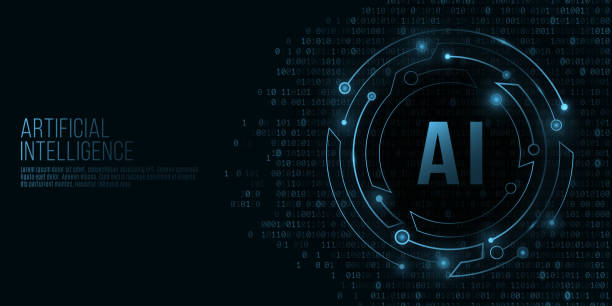
#Artificial_Intelligence (AI) has transcended laboratory boundaries and become an inseparable part of daily life and various industries.
The applications of AI are so vast and diverse that we might not even be aware of many of them.
In daily life, from voice assistants like Siri and Alexa, which respond to our voice commands and perform tasks, to movie and music recommendation systems on streaming platforms, all leverage the power of AI.
In the field of medicine, AI is used for diagnosing diseases (such as cancer), discovering new drugs, and personalizing treatment plans.
These capabilities help doctors make more accurate and faster decisions.
In the transportation industry, self-driving cars and intelligent traffic management systems utilize AI to increase safety and efficiency.
Navigation systems also suggest the best routes by analyzing real-time traffic data.
In the manufacturing sector, intelligent robots are deployed on assembly lines, and by learning from their environment, they significantly increase production quality and speed.
Even in agriculture, AI is used to optimize irrigation, monitor crop health, and predict yields.
These applications not only increase efficiency but also help save resources and reduce costs.
This entertaining and informative section clearly demonstrates the impact of AI on various industries and provides a clear picture of how this technology is transforming the world.
From AI in security systems to financial data analysis, AI applications are expanding every day, promising a more efficient and intelligent future.
Challenges and Limitations of Artificial Intelligence
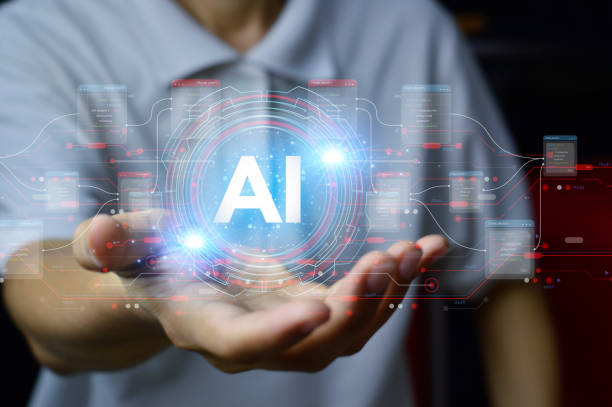
As #Artificial_Intelligence (AI) continues to advance, it also faces significant challenges and limitations, the understanding of which is essential for the responsible development of this technology.
One of the biggest challenges is algorithmic bias.
AI systems learn from data generated by humans, and if this data contains racial, gender, or social biases, the algorithm will reproduce and even amplify these biases.
This can lead to unfair and discriminatory outcomes in important decision-making.
Another challenge is the “black box problem”; many deep learning systems are so complex that even their developers cannot fully explain why a particular decision was made.
This lack of transparency, especially in sensitive areas such as medicine or justice, can reduce public trust in AI.
Heavy reliance on data is also a significant limitation.
For AI to learn and function correctly, it requires vast amounts of high-quality data, and collecting, cleaning, and managing this data is a complex and costly process in itself.
Furthermore, AI still has serious limitations in understanding common sense, context-based reasoning, and human emotions.
This analytical and thought-provoking content highlights the obstacles facing AI in the future.
The future of AI and its success depend on our ability to overcome these limitations.
Responsible AI development, with consideration for social and ethical implications, is of paramount importance to prevent the creation of systems that harm rather than help humans.
The challenges of AI require interdisciplinary approaches and global cooperation.
The Future of Artificial Intelligence: Outlooks and Upcoming Trends

The future of #Artificial_Intelligence (AI) is full of unprecedented potential and transformative trends that are expected to fundamentally change the world in the coming decades.
One of the most important upcoming trends is Generative AI, which has the ability to produce new and creative content, from text and images to music and code.
This technology has the potential to revolutionize creative industries, marketing, and even software development.
Furthermore, AI is expected to be increasingly integrated into edge devices (Edge AI) such as smartphones and Internet of Things (IoT) devices, enabling on-site data processing and reducing latency.
This is crucial, especially for applications requiring fast responses.
The development of Explainable AI (XAI) is also a key trend, aiming to increase transparency and trustworthiness of AI systems by allowing users to understand how the system arrived at its decisions.
This will significantly help solve the “black box problem.”
AI is also advancing towards self-monitoring and self-improving AI, which will be capable of continuous learning and performance enhancement without human intervention.
This analytical and informative section outlines AI’s potential to transform the world.
Advances in Quantum AI could also elevate computations to new levels and solve highly complex problems that are currently intractable.
All these outlooks point to a future where AI is not just an automation tool but also an intelligent collaborator in solving humanity’s greatest challenges.
The future of AI requires meticulous planning and continuous innovation to best leverage its benefits.
| Upcoming Trend | Description | Expected Impact |
|---|---|---|
| Generative AI | Ability to generate new and creative content (text, image, music). | Transformation of creative industries, marketing, and product development. |
| Edge AI | Processing data locally on devices, rather than in the cloud. | Reduced latency, increased privacy, and efficiency in IoT. |
| Explainable AI (XAI) | Development of systems that transparently explain their decisions. | Increased trust, accountability, and public acceptance of AI. |
| Quantum AI | Using principles of quantum mechanics for AI computations. | Solving highly complex problems and unprecedented acceleration in data processing. |
Artificial Intelligence and Ethics: Responsibility and Social Challenges
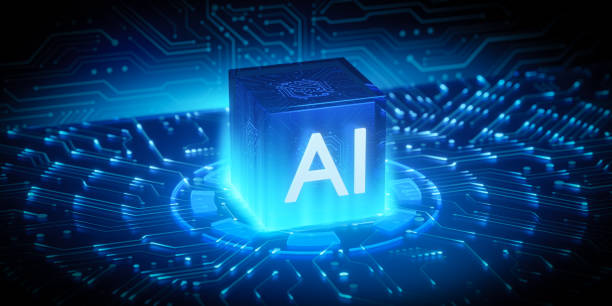
Rapid advancements in #Artificial_Intelligence (AI) have not only created countless opportunities but also raised deep concerns regarding ethical issues and social challenges.
Responsibility in the development and deployment of AI is of paramount importance, as the decisions made by these systems can have widespread impacts on individuals’ lives.
One of the main concerns is the issue of data privacy.
AI systems require access to large volumes of personal information for learning, which can lead to concerns about how this data is collected, stored, and used.
Transparency and fairness are also important ethical considerations.
AI algorithms may inadvertently reproduce biases present in training data, leading to discrimination in areas such as employment, lending, or criminal justice.
This section provides thought-provoking and analytical content regarding the ethical challenges of AI in society.
Questions about who is responsible for AI errors, or how to prevent the misuse of AI (such as the development of lethal autonomous weapons), occupy the minds of researchers, policymakers, and the general public.
The need for strong legal and ethical frameworks to guide AI development is more urgent than ever.
These frameworks must encompass principles of transparency, accountability, fairness, and privacy.
Creating responsible and ethical AI requires international cooperation, multidisciplinary participation, and extensive public dialogue to ensure that this technology serves humanity rather than acts against it.
These challenges demonstrate that AI is not just a technical issue but also an ethical and social one that requires deep consideration.
Are visitors leaving your e-commerce site before making a purchase? Don’t worry anymore! With Rasaweb’s professional e-commerce website design services, permanently solve the problem of not converting visitors into customers!
✅ Significant increase in conversion rates and sales
✅ Unparalleled and engaging user experience
⚡ Contact us now for a free consultation!
The Role of Artificial Intelligence in Job Changes and the Labor Market

The emergence and advancement of #Artificial_Intelligence (AI) are inevitably impacting the labor market and jobs worldwide.
While some are concerned about job losses due to automation, many others emphasize the creation of new jobs and increased productivity.
AI can perform repetitive and rule-based tasks more efficiently than humans.
This has led to automation in industries such as manufacturing, customer service, and transportation.
Consequently, some traditional jobs may decline or change in nature.
However, AI also creates opportunities for new job creation.
Roles such as AI engineers, data analysts, AI ethics specialists, and UX designers for intelligent systems are all on the rise.
These jobs require new skills focused on interacting with AI systems, interpreting data, and solving complex problems.
This analytical and informative section examines AI’s developments in the realm of work.
The need for retraining and upskilling for the current workforce is of high importance.
Individuals must strengthen their skills in areas such as critical thinking, complex problem-solving, creativity, and emotional intelligence, which AI cannot easily replicate.
Governments, educational institutions, and companies play a vital role in providing training opportunities to prepare the workforce for an AI-driven future.
Artificial intelligence, as an assistive tool, can allow humans to focus on more valuable and creative tasks, thereby increasing overall productivity.
Ultimately, the impact of AI on jobs is complex and multifaceted, requiring a balanced and forward-looking approach to manage these changes.
AI Education and Learning: Practical Steps to Enter This Field
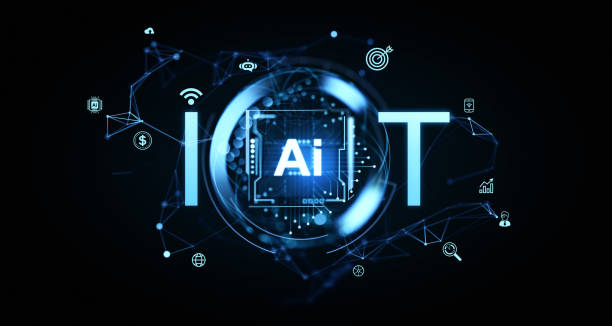
Entering the field of #Artificial_Intelligence (AI) is appealing to many, given its rapid growth and high potential.
Fortunately, numerous educational resources are available for enthusiasts at various levels.
The first step to begin is acquiring foundational knowledge in mathematics and computer science.
Concepts such as linear algebra, calculus, statistics and probability, and programming (especially Python) are of particular importance.
Due to its rich libraries like TensorFlow and PyTorch, Python is the primary language in AI development.
After mastering these fundamentals, one can proceed to more specialized courses in machine learning and deep learning.
Platforms like Coursera, edX, Udacity, and even free resources such as Keras and Scikit-learn libraries, offer excellent educational resources.
Learning through practical projects and participating in coding competitions is an excellent way to consolidate knowledge and gain experience.
This educational and guidance section provides AI learning opportunities for everyone.
Given the rapid pace of change in the AI field, continuous learning and staying updated with the latest advancements are crucial.
Attending conferences, webinars, and following specialized blogs can help you in this regard.
Also, joining online AI communities and networking with experts in this field can open new career and learning opportunities for you.
Even for individuals without a strong technical background, many introductory courses are available to help them familiarize themselves with the basic concepts of AI and gain a deeper understanding of its potential across various industries.
AI is a vast field, and with effort and interest, anyone can succeed in it.
Frequently Asked Questions
| Question | Answer |
|---|---|
| 1. What is Artificial Intelligence (AI)? | It is a branch of computer science that aims to create machines capable of simulating human intelligence and performing tasks that require human thinking, such as learning, problem-solving, and decision-making. |
| 2. What are the main types of Artificial Intelligence? | They can be classified into Narrow AI, which focuses on a specific task; General AI, which possesses comprehensive human-level capabilities; and Super AI, which surpasses human intelligence. |
| 3. Mention some common Artificial Intelligence applications in our daily lives. | They include voice assistants (like Siri and Alexa), recommendation systems (like Netflix and Amazon), self-driving cars, facial recognition systems, and spam filters. |
| 4. What is the difference between Artificial Intelligence and Machine Learning? | Artificial Intelligence is the broader concept of creating intelligent machines, while Machine Learning is a subset of AI that focuses on enabling systems to learn from data without explicit programming. |
| 5. What is Deep Learning? | It is a subset of Machine Learning that uses multi-layered artificial neural networks (deep neural networks) to process data and discover complex patterns, and it is used in image and speech recognition. |
| 6. What are the main benefits of Artificial Intelligence? | Improving efficiency and productivity, automating repetitive tasks, making better decisions based on big data analysis, and developing solutions for complex problems in fields such as medicine and science. |
| 7. What are the main challenges facing the development and deployment of Artificial Intelligence? | These include the need for massive amounts of high-quality data, privacy and security issues, bias in data and algorithms, and high development and maintenance costs. |
| 8. Does Artificial Intelligence raise ethical or social concerns? | Yes, it raises concerns regarding privacy, algorithmic bias, job displacement due to automation, responsibility for errors made by intelligent systems, and the need for a regulatory framework. |
| 9. How can Artificial Intelligence affect the future of the job market? | It can lead to the automation of some routine jobs, but it will also create new jobs that require advanced skills in developing, operating, and maintaining AI systems. |
| 10. What are some modern or promising technologies in the field of Artificial Intelligence? | These include advanced Natural Language Processing (NLP) (such as large language models like ChatGPT), computer vision, robotics, and Generative AI. |
And other services of Rasaweb Advertising Agency in the field of advertising:
Smart Reportage: A novel service for increasing customer attraction through custom programming.
Smart Conversion Rate Optimization: A creative platform for improving click-through rates using real data.
Smart Marketplace: Designed for businesses seeking online growth through intelligent data analysis.
Smart UI/UX: A novel service for enhancing campaign management through custom programming.
Smart Brand Identity: A combination of creativity and technology to increase sales through precise audience targeting.
And over a hundred other services in the field of internet advertising, advertising consultation, and organizational solutions.
Internet Advertising | Advertising Strategy | Advertorials
Resources
Article: The Power of AI in Discovering New Worlds
Research: The Role of AI in Scientific Discoveries
News: AI and Unknown Frontiers
Blog: AI Advancements in World Discovery
? Are you ready to revolutionize your business in the digital world? Rasaweb Afarin Digital Marketing Agency, by offering comprehensive services including custom website design, professional SEO, and social media management, paves your path to growth and success. With us, have a powerful and lasting presence in the online space.
📍 Tehran, Mirdamad Street, next to Bank Markazi, Southern Kazeroon Alley, Ramin Alley, Plaque 6



